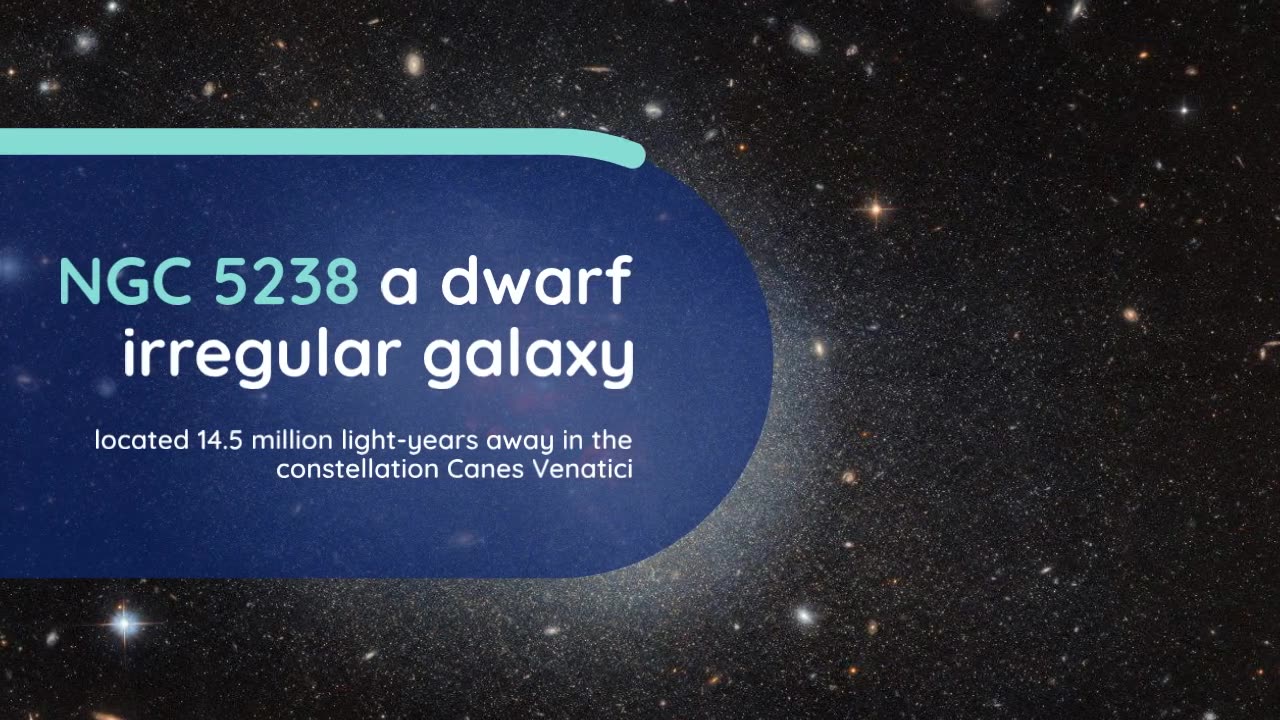Premium Only Content

Assembling the Cosmos: Hubble Reveals How Dwarf Galaxies Shape the Largest Galaxies
NGC 5238, a dwarf irregular galaxy imaged by the Hubble Space Telescope, displays a complex structure despite its unassuming appearance. Located in the constellation Canes Venatici, it is theorized to have undergone a significant interaction with a satellite galaxy, providing insights into the process of galaxy formation and evolution.
The galaxy featured in this Hubble Space Telescope image is the dwarf irregular galaxy NGC 5238, located 14.5 million light-years from Earth in the constellation Canes Venatici. Its unexciting, blob-like appearance, resembling more an oversized star cluster than a galaxy, belies a complicated structure that has been the subject of much research by astronomers. Here, the NASA/ESA Hubble Space Telescope is able to pick out the galaxy’s countless stars, as well as its associated globular clusters — the glowing spots both inside and around the galaxy that are swarmed by yet more stars.
Galactic Encounter Hypothesis
-
 50:30
50:30
Sean Unpaved
5 hours agoInside the NFL: Ed Werder Talks Cowboys, Contracts, & Coaches
31.1K1 -
 LIVE
LIVE
GritsGG
8 hours agoWin Streaking! Most Wins 3390+ 🧠
151 watching -

WolfsDenBoxing
1 hour ago $0.02 earnedThe Come Up Boxing Podcast - When you first walk in... What happens?
10.1K -
 1:07:26
1:07:26
Jeff Ahern
2 hours ago $0.04 earnedFriday Freak out with Jeff Ahern
16.6K -
 1:04:42
1:04:42
Crypto Power Hour
2 hours ago $0.02 earnedDeFi's SWIFT Replacement, 2026 Global Financial Revolution PART II
13.5K4 -
 21:07
21:07
Silver Dragons
4 hours agoBullion Dealer on GOLD VS SILVER Next 15 Years (SHOCKING!)
11.7K1 -
 20:29
20:29
T-SPLY
18 hours agoWashington Governor Under Risk Of Being Arrested!
13.4K29 -
 2:08:43
2:08:43
The Quartering
4 hours agoTrump's Big Announcement LIVE & Today's News!
150K53 -
 1:45:59
1:45:59
Tucker Carlson
5 hours agoAaron Lewis on Being Blacklisted from Radio & Why Record Labels Intentionally Promote Terrible Music
62.4K48 -
 5:55
5:55
Coin Stories with Natalie Brunell
6 hours agoWho's Selling Bitcoin? Preston Pysh on Bearish Sentiment, Bitcoin Treasury Warning Signs and Ponzis
7.44K